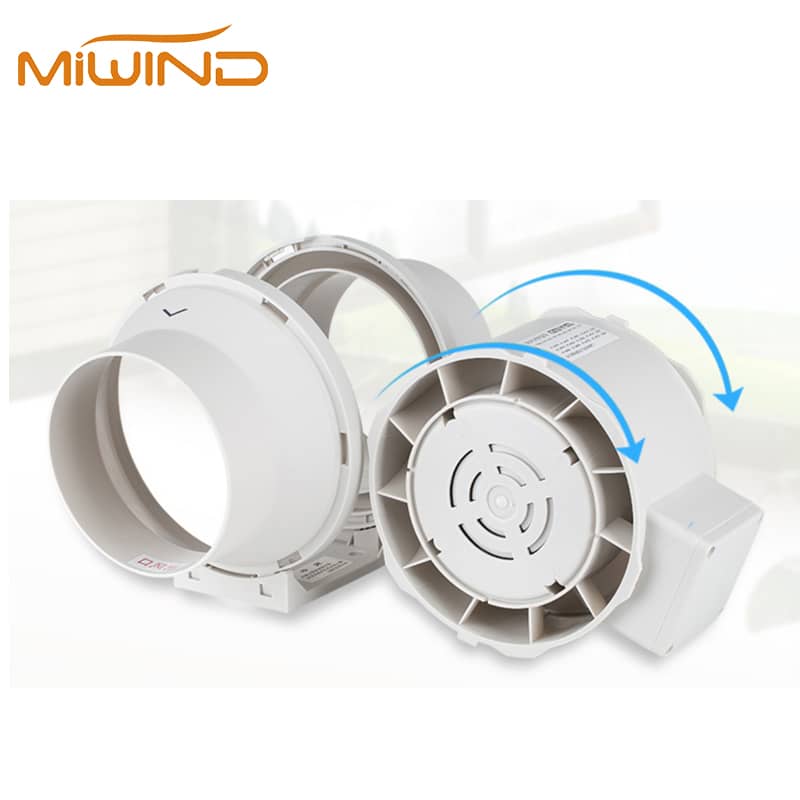
In today's world, where energy efficiency and environmental sustainability are increasingly important, high efficiency ventilation fans have become a crucial component in both residential and commercial settings. These fans not only improve indoor air quality but also significantly reduce energy consumption, making them a vital tool for creating healthier and more sustainable environments. This article will delve into the benefits of high efficiency ventilation fans, exploring how they maximize airflow, enhance indoor air quality, and contribute to energy savings.
High efficiency ventilation fans are designed to provide superior airflow while minimizing energy use. Unlike traditional fans, which often consume more power and move less air, these modern fans utilize advanced technologies to optimize performance. They are available in various types, including axial, centrifugal, and mixed flow fans, each suited for different applications and environments.
High efficiency ventilation fans are engineered to move large volumes of air with minimal energy consumption. This results in improved air circulation, which is essential for maintaining a comfortable indoor environment. By efficiently circulating air, these fans help to distribute heat evenly throughout a space, reducing hot spots and cold drafts. This not only enhances occupant comfort but also allows for more consistent temperature control, which can lead to reduced heating and cooling costs.
One of the most significant benefits of high efficiency ventilation fans is their ability to improve indoor air quality. By effectively exchanging stale air for fresh air, these fans help remove pollutants, moisture, and odors from indoor environments. This is particularly important in settings where poor air quality can lead to health issues, such as Sick Building Syndrome (SBS). High efficiency fans ensure that indoor spaces remain well-ventilated, reducing the concentration of harmful substances and creating healthier environments for occupants.
High efficiency ventilation fans are designed to consume less energy than traditional fans. By using advanced motor technologies and optimized fan designs, these systems reduce energy losses associated with friction and heat dissipation. This results in lower electricity bills and operational costs, making them a cost-effective solution for both residential and commercial applications. Additionally, many high efficiency fans qualify for energy efficiency incentives and rebates, further reducing their overall cost.
The environmental impact of high efficiency ventilation fans cannot be overstated. By reducing energy consumption, these fans contribute to lower greenhouse gas emissions and a smaller carbon footprint. This aligns with global efforts to combat climate change and promote sustainable practices. Furthermore, the reduced need for extensive ductwork and HVAC systems means less material waste and lower installation costs, making high efficiency fans a more environmentally friendly choice.
Axial fans are one of the most common types of high efficiency ventilation fans. They move air in a straight line, parallel to the axis of rotation, making them ideal for applications requiring high airflow rates at low pressures. Axial fans are widely used in commercial and industrial settings for ventilation, cooling, and exhaust systems. Their compact design and quiet operation make them suitable for environments where noise control is essential.
Centrifugal fans, on the other hand, use centrifugal force to move air. They are more effective in applications requiring higher pressures and are often used in systems where air needs to be pushed through ducts or against resistance. While they are generally less efficient than axial fans, advancements in design have improved their energy efficiency, making them a viable option for certain applications.
Mixed flow fans combine the features of axial and centrifugal fans, offering a versatile solution for various airflow needs. They provide a balance between high airflow rates and pressure capabilities, making them suitable for a wide range of applications, from ventilation to cooling systems.
Several case studies highlight the benefits of high efficiency ventilation fans in real-world settings:
Industrial Facilities: High-volume, low-speed (HVLS) fans have been successfully implemented in large industrial spaces to improve air quality and reduce energy costs. These fans can circulate massive volumes of air, creating a perceived temperature drop that enhances worker comfort without significantly lowering the actual temperature.
Residential Buildings: Upgrading ventilation systems with high efficiency fans has improved indoor air quality and reduced energy consumption in residential settings. For instance, a case study in New York involved replacing outdated rooftop fans with modern, energy-efficient models, resulting in improved air quality and reduced carbon emissions.
High efficiency ventilation fans offer a multitude of benefits, from maximizing airflow and improving indoor air quality to reducing energy consumption and environmental impact. By understanding the different types of fans available and their applications, individuals and organizations can make informed decisions about how to best utilize these systems. Whether you are looking to enhance comfort in a residential setting or optimize airflow in a commercial space, high efficiency ventilation fans are a valuable investment.